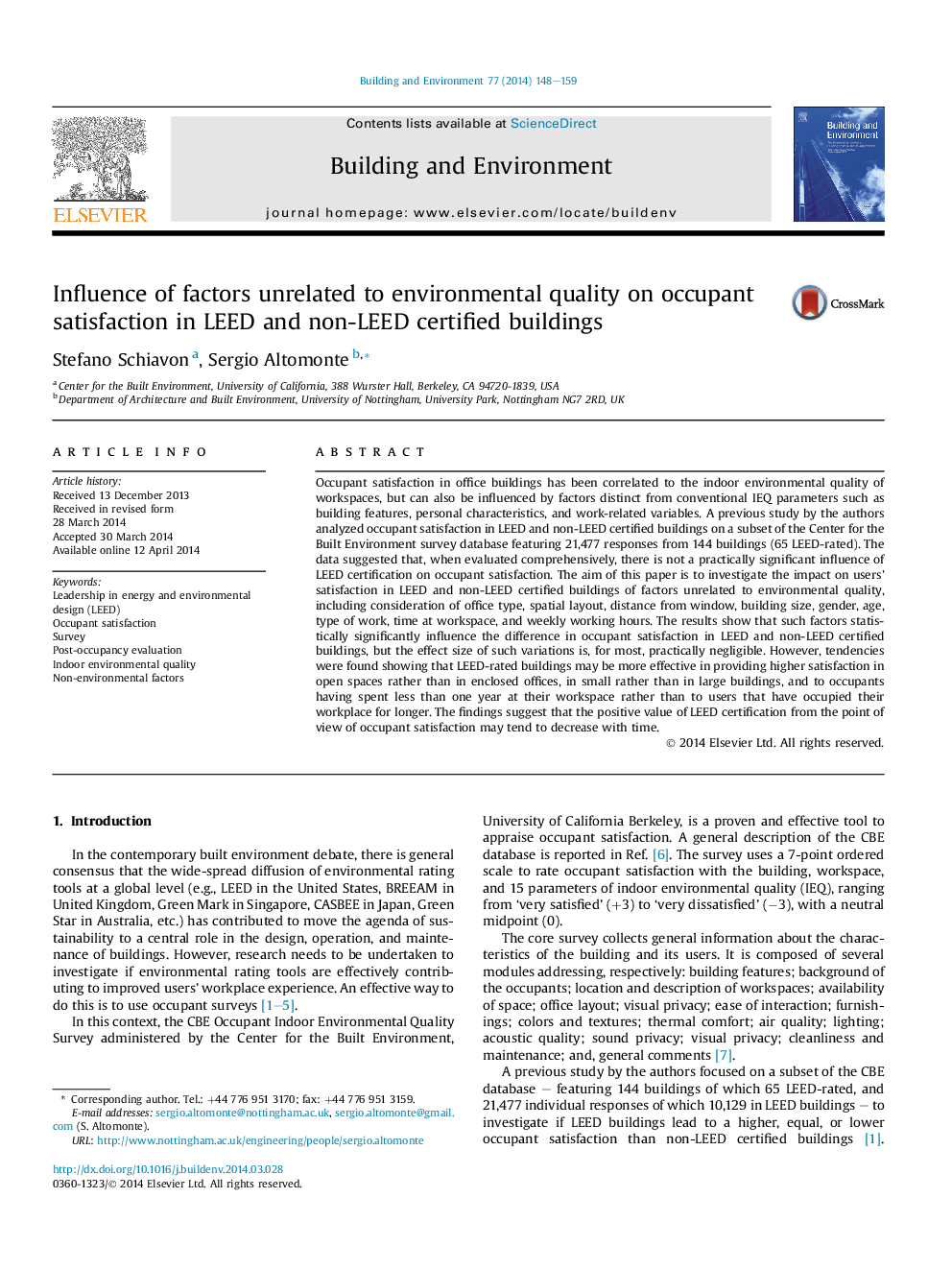| کد مقاله | کد نشریه | سال انتشار | مقاله انگلیسی | نسخه تمام متن |
|---|---|---|---|---|
| 248228 | 502553 | 2014 | 12 صفحه PDF | دانلود رایگان |

• Impact of non-IEQ factors on satisfaction in LEED and non-LEED buildings was tested.
• Non-IEQ factors significantly influence the effectiveness of LEED on satisfaction.
• Effect size of differences in satisfaction is almost always practically negligible.
• Effectiveness of LEED on satisfaction is higher in small buildings and open spaces.
• Effectiveness of LEED on satisfaction may tend to decrease with time.
Occupant satisfaction in office buildings has been correlated to the indoor environmental quality of workspaces, but can also be influenced by factors distinct from conventional IEQ parameters such as building features, personal characteristics, and work-related variables. A previous study by the authors analyzed occupant satisfaction in LEED and non-LEED certified buildings on a subset of the Center for the Built Environment survey database featuring 21,477 responses from 144 buildings (65 LEED-rated). The data suggested that, when evaluated comprehensively, there is not a practically significant influence of LEED certification on occupant satisfaction. The aim of this paper is to investigate the impact on users' satisfaction in LEED and non-LEED certified buildings of factors unrelated to environmental quality, including consideration of office type, spatial layout, distance from window, building size, gender, age, type of work, time at workspace, and weekly working hours. The results show that such factors statistically significantly influence the difference in occupant satisfaction in LEED and non-LEED certified buildings, but the effect size of such variations is, for most, practically negligible. However, tendencies were found showing that LEED-rated buildings may be more effective in providing higher satisfaction in open spaces rather than in enclosed offices, in small rather than in large buildings, and to occupants having spent less than one year at their workspace rather than to users that have occupied their workplace for longer. The findings suggest that the positive value of LEED certification from the point of view of occupant satisfaction may tend to decrease with time.
Figure optionsDownload as PowerPoint slide
Journal: Building and Environment - Volume 77, July 2014, Pages 148–159